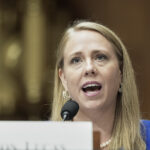This article is part of a sponsored series by Academy Journal.
This is third in a series of posts where I plan to respond to the bills that several states have filed to force insurance companies to pay business income claims related to COVID-19.
Not reimbursing insurers means higher rates for business income coverage.
The bill that we read told us that the insurers may apply to be reimbursed by the state. It did not say that the insurer must apply or that they must be reimbursed for these claims. It also told us that the state will create procedures for submission and qualification of claims.
That tells us that there will be some red tape because what government entity doesn’t love to have its procedures? No one will complain about the red tape that an insurer must comply with to get payment because at least the consumer doesn’t have to deal with it and insurers are the bad guys anyway, right?
If the state becomes overwhelmed with claims by insurers and the state falls behind, no one is going to notice if these payments get delayed, denied, or distracted. When claims fall through the cracks and insurers aren’t reimbursed for the losses, they will then turn to their actuarial teams, underwriting teams, and product development teams to regroup and work on lowering their loss ratios in the future.
This means that they will file rate increases, specifically for business income coverage and building and personal property coverage. The rate increase for business income makes perfect insurance sense because the insurer paid out much more in claims than they collected premium for and they paid claims that they hadn’t (and couldn’t have) anticipated. But I also mentioned that they will be looking for rate increases in other property lines. This will be because these new laws change the exposure calculation for those lines, too. There may be several lines that could see an unanticipated rate increase because of changes in exposure.
In the end, passing a law that simply changes the coverage requirements of policies in force then creates uncertainty for insurers. This means simply that the insurer will work to mitigate its own risk and that means rate increases for the customers.
Fewer insureds will be able to afford certain coverages and will cut back their insurance purchases.
With the rate increases come sticker shock as the insureds start to see their insurance bills go up. That’s when they call their agent and ask (in the calmest voices possible) “Why, pray Good Insurance Agent, has my insurance bill gone up so significantly? I don’t recall putting in any claims recently.”
When the explanation comes, which it will, the insured may respond by simply stating that they cannot afford such luxuries as business income coverage any longer. Of course, their valiant agent will respond that this coverage is critical to protect their business should something happen to cause them to be shut down for an extended period, such as a fire, or hurricane.
That conversation will be had multiplied times over as agents and insureds wrestle with the increased premiums that come naturally whenever a new exposure changes the insurance landscape, especially something that takes the insurance industry by surprise.
Some of those insureds will bite the bullet and pay the higher premiums for a while, others will ask their agent to find them a less expensive alternative, and still others will decide to self-insure through that risk going forward. In the end, the net result may be that the insurance companies will show a reduced premium volume in some lines, forcing them to ask later if they can afford to provide coverage for certain risks in certain states.
What happens if fewer insureds buy insurance, or if insurance companies find that they cannot offer coverage for certain claims?
Was this article valuable?
Here are more articles you may enjoy.



 Head of EEOC Urges White Men to Report Discrimination
Head of EEOC Urges White Men to Report Discrimination  FBI Involved After Two Florida Injury Lawyers Go Missing From Fishing Trip
FBI Involved After Two Florida Injury Lawyers Go Missing From Fishing Trip  Senators Launch Probe Into Demotech’s Ratings in Florida
Senators Launch Probe Into Demotech’s Ratings in Florida  Howden US Tells Judge Brown & Brown Employees Fled Due to ‘Mistreatment’
Howden US Tells Judge Brown & Brown Employees Fled Due to ‘Mistreatment’ 


